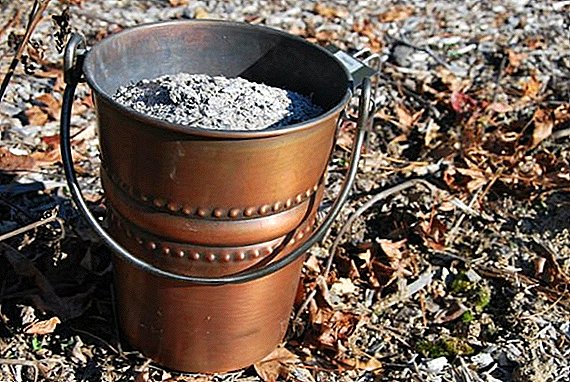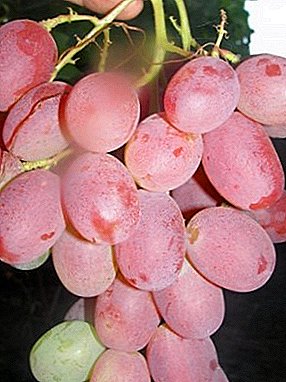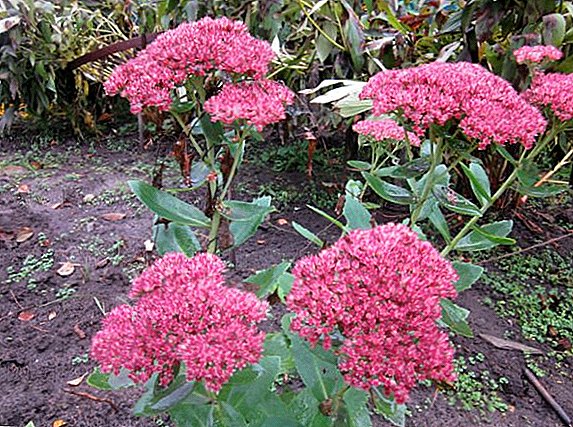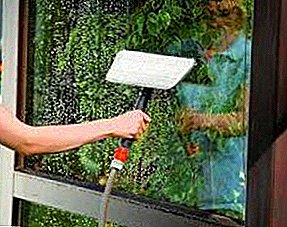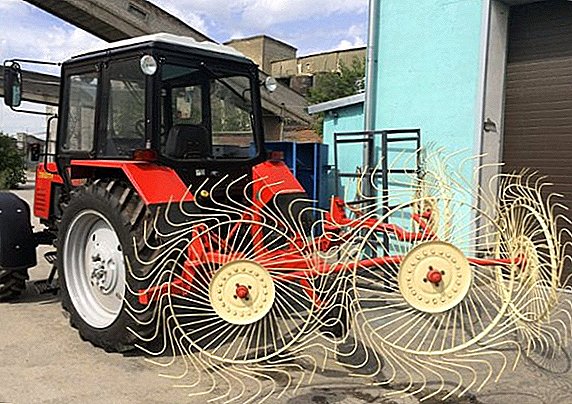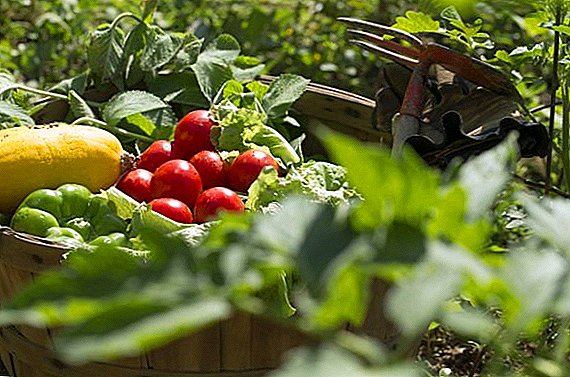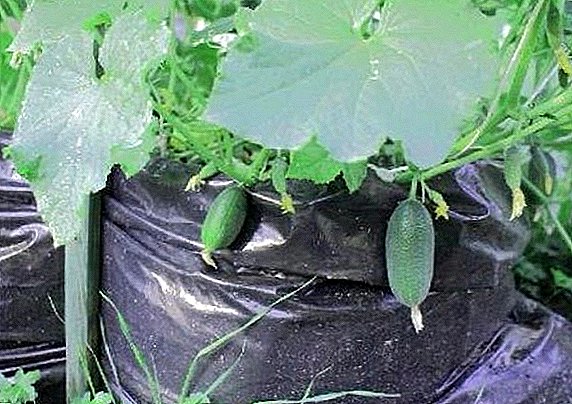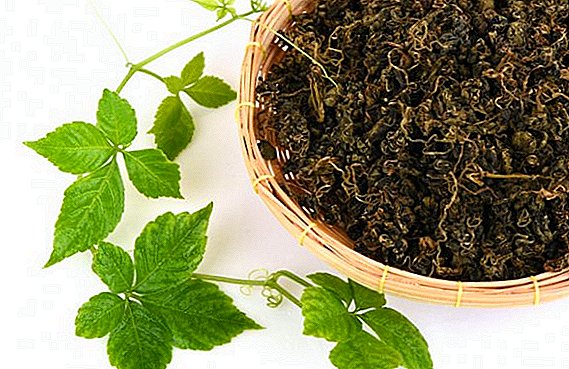 Usually geranium is associated with a simple, sharp-smelling plant, blooming red inflorescences and is an essential attribute of grandmother's window sill. However, today it is not entirely correct: decades of selection have given us a lot of great-looking varieties that are worthy of decorating any home. In this article we will get acquainted with the real beauty - tulip-like geraniums.
Usually geranium is associated with a simple, sharp-smelling plant, blooming red inflorescences and is an essential attribute of grandmother's window sill. However, today it is not entirely correct: decades of selection have given us a lot of great-looking varieties that are worthy of decorating any home. In this article we will get acquainted with the real beauty - tulip-like geraniums.
Features of the plant
Fiat tulip-like geranium differs from its ancestor of pelargonium primarily by the structure of the flower. If the leaves and trunk are very similar to other varieties of pelargonium, then you will not confuse inflorescences with anything. The color usually varies from light pink to burgundy, the petals are darker on the inside, and on the outside they are often decorated with contrasting veins.
The inflorescence is very large, consists of five dozen small (about a centimeter in length) flowers. The flowers themselves are very similar to not fully bloomed tulips, which gave the name of this geranium. Each flower has eight petals with smooth or wavy edges.
Did you know? The second name of geranium is a crane, since its fruits resemble the form of a crane crane. It is from the Greek word "geranion" (in translation - "crane") and the name of the flower.

How to care for geraniums
Pelargonium is considered to be a very unpretentious plant, but while caring for it, certain rules should be followed, especially if you want a beautiful woman to enjoy flowering all year round.
We recommend that you read about how to properly cut geranium for lush flowering.
The soil
If you can not buy a special soil, it can be formed independently. There are two optimal compositions:
- Land, peat, sand in a ratio of 2: 2: 1.
- Peat, humus, turf, sand in the proportion of 2: 2: 2: 1.
Care should be taken to ensure that the soil is loose, and that there are holes in the pot for abstraction of excess moisture. As an additional drainage on the bottom of the pot, you can lay out a layer of expanded clay or shards. 
Shine
The plant is light-loving, but from too intense direct sunlight can get burned. Optimal for her diffused light. In winter you should take care of artificial light.
Temperature
Geranium likes average temperatures: in the summer - 21-26 ° С, in the winter - 14-16 ° С. Observance of optimal conditions will allow year-round flowering.
Check out the care of the ampelous, royal and magnificent geraniums.
Watering
Watering should not be excessive, as the roots of pelargonium are prone to decay. If the plant is "poured", it will die before you feel something is wrong. Water is better to take at room temperature, separated. The amount of water per irrigation depends on the volume of the pot and the size of the plant. In the warm season, you need to water four times a week, in winter the amount of watering is reduced to once a week.
Important! It is easy to reveal problems with the amount of water: if the leaves (especially the lower ones) turn brown and the edges dry, there is not enough water; if the leaves are sluggish, they fall off easily - watering is excessive.

Pruning
The formation of the bush is simply necessary, because without pruning the geranium will grow with unattractive long "sticks". Crop better in spring. Too long or old shoots are intended for removal.
Pay attention: at least five buds should remain on each branch. Cut branches should be treated with charcoal. After pruning, the plant should be fed to enhance growth.
Top dressing
In spring and summer, geraniums need fertilizer. It is best to irrigate with liquid media (for example, Kemira, Agricola, Fertika or analogues) containing phosphorus and potassium. Maximum - 2 times a month.
Breeding
Pelargonium can be propagated in two ways: cuttings and seeds. The first is very simple, the second at home is almost impossible, the seeds are usually bought in specialized stores.
Important! Take the cuttings from the top of the plant, choose those that already have 2-3 leaves, cut by the bundle.
 Cutting should be done as follows:
Cutting should be done as follows:
- at the end of the summer, cuttings are cut;
- cut shoots are placed in the water;
- after the appearance of the roots, the planting is carried out in the soil (the soil is similar to the optimum one for an adult flower);
- disembarkation is carried out in wet ground;
- after that pots are exposed on the sunny side.
You will probably be interested to read about how to independently grow pelargonium from seed.
Growing seeds is as follows:
- landing in boxes is optimal in January;
- seeds cover only slightly with earth, they do not need to be dug deep;
- then it is necessary to cover the boxes with a film in order to create conditions with sufficient heat and humidity;
- after the appearance of sprouts (2-3 leaves should appear), each plant is transplanted into a separate small container;
- Further, when the shoot can be called an adult plant, it is transplanted into a large pot.
Origin
The history of tulip-shaped pelargonium begins in 1966 in Boston, in the family flower nursery of the Andrea family. It was there that (as a result of hybridization, according to Andrea themselves, or mutations, as rumors say), the first varieties of tulip-like geranium were bred. All of them received female names in honor of girls and women from the Andrea family.
Beautifully decorate your home, such as the indoor plants zephyranthes, Spathiphyllum, nematanthus, Radermacher, Kufa, Gloriosa, Drimiopsis, Euphorbia, hypoestes, Pentas, Calceolaria, crossandra, Adenium, Alokaziya, Guzman, kolumneya, vrieziya.
Sorta
Due to the complexity of pollinating a flower, the creation of new varieties is very laborious. For all the time of their selection appeared only fifteen. Derived by the authors themselves:
- Patricia Andrea (very first grade);
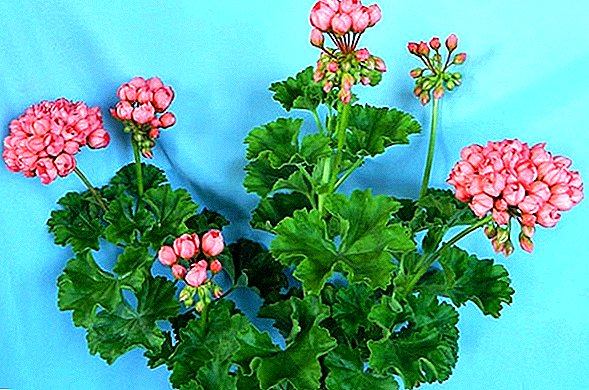
- Linea Andrea;
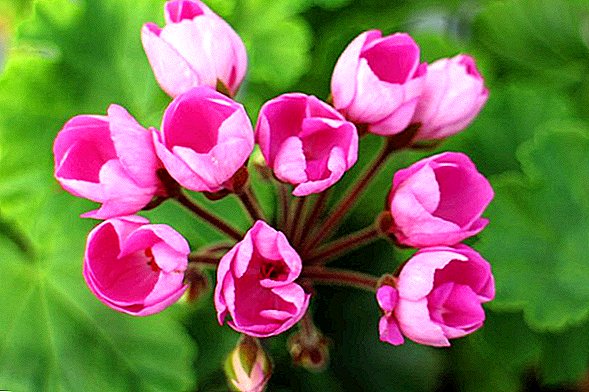
- Lilian Andrea;

- Carmen Andrea;

- Victoria Andrea.
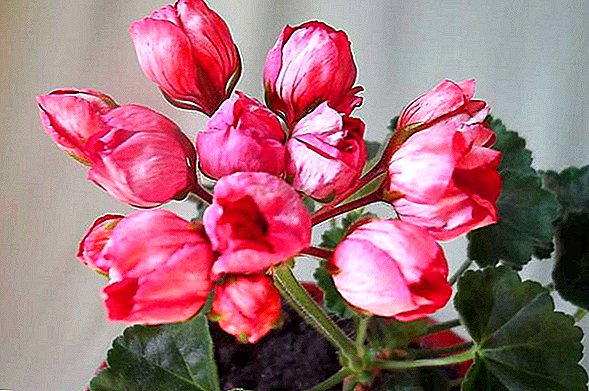
Discover the most sought-after species of room geraniums.
In the future, new hybrids began to appear:
- Happy Birthday;

- Mrs Charles;
- Marie-Louis;

- Marbacka Tulpan;
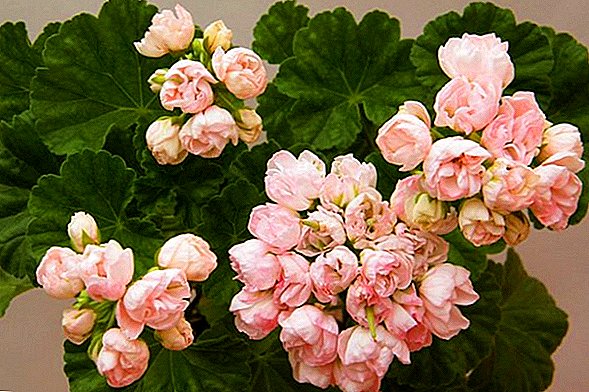
- Emma fran Bengstbo;
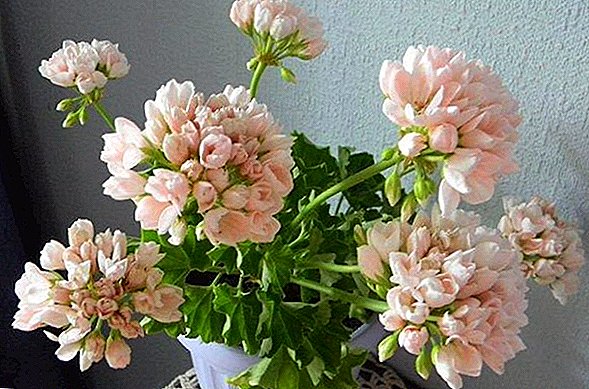
- Pandora (varieties Red and Pink);
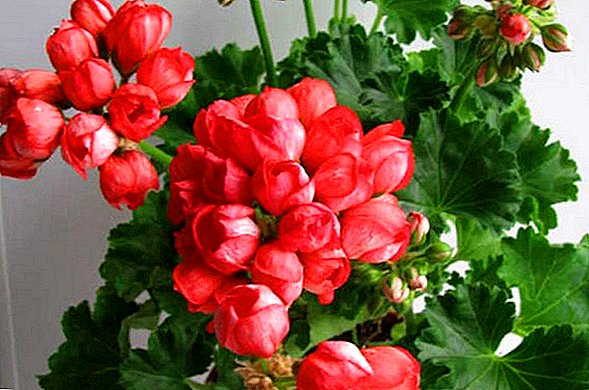
- Conny;
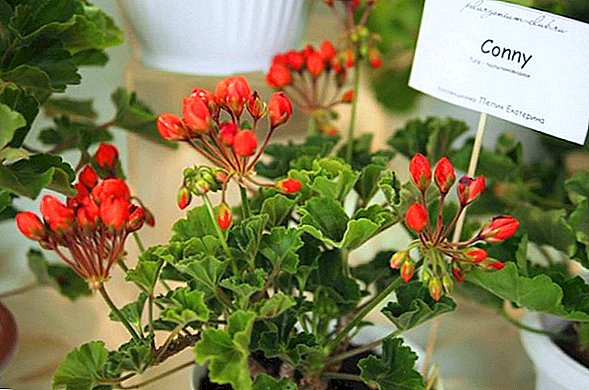
- Apple Blossom;
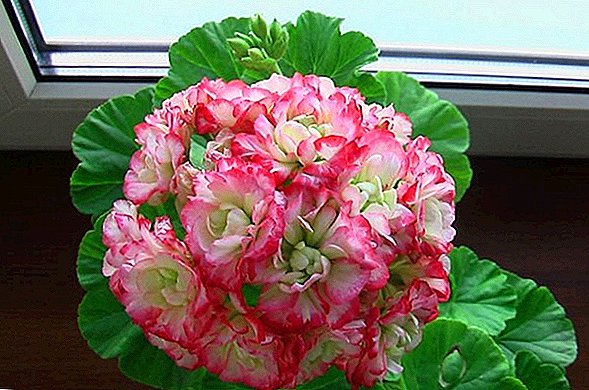
- Herma.
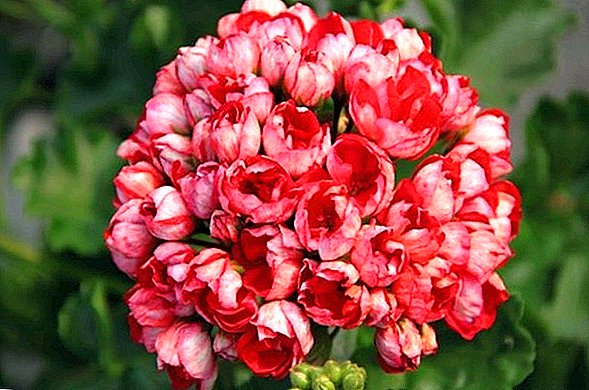
Disease and pest prevention
Your favorite can be affected by the following ailments:
- Rust - A fungal disease affecting the leaves and stems mainly in the winter. Visually looks like yellowish-red pustules, spreads very quickly. To combat rust, Bordeaux liquid or special preparations are used (the most effective: Baktofin, Topaz, Fitosporin-S).
- Parasites. The most frequent guests: Mealybug - small and thick white worms (you will see them with the naked eye); spider mite (if you do not notice the tick itself, which is very small, then you should definitely not miss its web); whiteflies (small moths that look like moths, but white). Against these evils will help special means - insecticides against worms and moths, acaricides against ticks. Or, in the early stages, when there are still few pests, you can try to remove them with folk remedies: alcohol, tincture of tobacco, yarrow or garlic, soapy water.
- Gray rot. Manifested in the form of gray spots, usually on the wrong side of the leaves. Fungicides help against it. Also effective means similar to those used to combat rust.

For the prevention of problems should:
- regulate indoor humidity (diseases like dampness);
- air regularly;
- tear off and dispose of plant leaves at the slightest suspicion of infection;
- all new plants to begin to keep in quarantine, so as not to bring into the house disease.
Did you know? Geranium is known for its sharp smell, which can even scare off insects. However, modern varieties do not smell. To feel the specific aroma, and with it nostalgia, the leaf should be very rubbed with your fingers.
So, if you want to decorate your window sill with an unpretentious, but at the same time fantastically beautiful flower, tulip-like pelargonium is the best choice.















